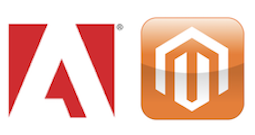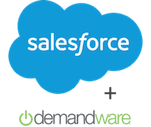
The latest deed came from Adobe, which revealed on May, 22nd 2018 the acquisition of Magento for $1.68 billion. Magento is an Ecommerce software company that offer large range of services from the online store creation, related transactions management to products delivery and return system.
Magento is primarily focused on SMB (Small and Medium Businesses) customers while Adobe specifically targets the larger companies. Adobe, which primarily offered marketing oriented digital solutions, can now provide a fully dedicated service focused on Ecommerce that would enhance its Experience Cloud platform. The comprehensive system will place the B2B and B2C shopping experience at the core as it enables clients to design the digital adds as well as the online store and enjoy the management tools that come along.
This acquisition also means Adobe is taking a step further into competing with industry heavyweights such as SAP Hybris, Oracle and last but not least Salesforce, a cloud-based software company which offers similar functionality including its own marketing, sales and service offerings in the cloud.
 Many large acquisitions in the Cloud Ecommerce business have emerged in the last few years. Prior to Adobe’s deal, Salesforce has acquired in 2016 for $2.8 billion Demandware, a global cloud leader in digital commerce market to all business size, which results in the creation of Salesforce Commerce Cloud division.
Many large acquisitions in the Cloud Ecommerce business have emerged in the last few years. Prior to Adobe’s deal, Salesforce has acquired in 2016 for $2.8 billion Demandware, a global cloud leader in digital commerce market to all business size, which results in the creation of Salesforce Commerce Cloud division.
Yet again, Salesforce, a specialist in CRM (Customer Relationship Management) has diversified into commercial applications through acquisition and internal development. Combined with the new division of Demandware, a cloud-based Ecommerce platform, they extended their services into a complete system from marketing to back-office software for sales.
That also allowed Salesforce to expand its customers based contracts with the new services while reaching a new group of customers at the same time. As a result, Salesforce’s revenue across its cloud activities reached an ever high $8.5 billion in 2017, and is expected to reach a staggering $10 billion this year.
 Another well-established player is the now called SAP Hybris following the successful acquisition of Hybris by SAP in 2013 for over $1 billion. Initially an expert in ERM software, SAP diversified its activities into Ecommerce solutions and content management with the purchase of Hybris. SAP Hybris has since been able to tackle IBM with its Unica and Sterling Commerce, and Oracle’s AGT and BEA commerce-oriented solution, by delivering a unified and consistent cross-channel customer experience.
Another well-established player is the now called SAP Hybris following the successful acquisition of Hybris by SAP in 2013 for over $1 billion. Initially an expert in ERM software, SAP diversified its activities into Ecommerce solutions and content management with the purchase of Hybris. SAP Hybris has since been able to tackle IBM with its Unica and Sterling Commerce, and Oracle’s AGT and BEA commerce-oriented solution, by delivering a unified and consistent cross-channel customer experience.
Overall, these acquisitions enable those companies to expand their solution services into a fully integrated offering that cover all the customers based needs. The customers are the apparent winners from the merge as they can enjoy improved solution services leveraging on a better integrated and a more complete system. It is also a positive impact for the company as it strengthens their position as a leader in the digital market and enable them to compete in new territories.
Bolstered by a bigger corporation with stronger financial support and a large range of services, those new divisions are pushing the competition to intensify. As a result, we can expect future big moves from the industry’s leading firms in the coming years, a stir that might be sooner than expected considering the flourishing market around the cloud.